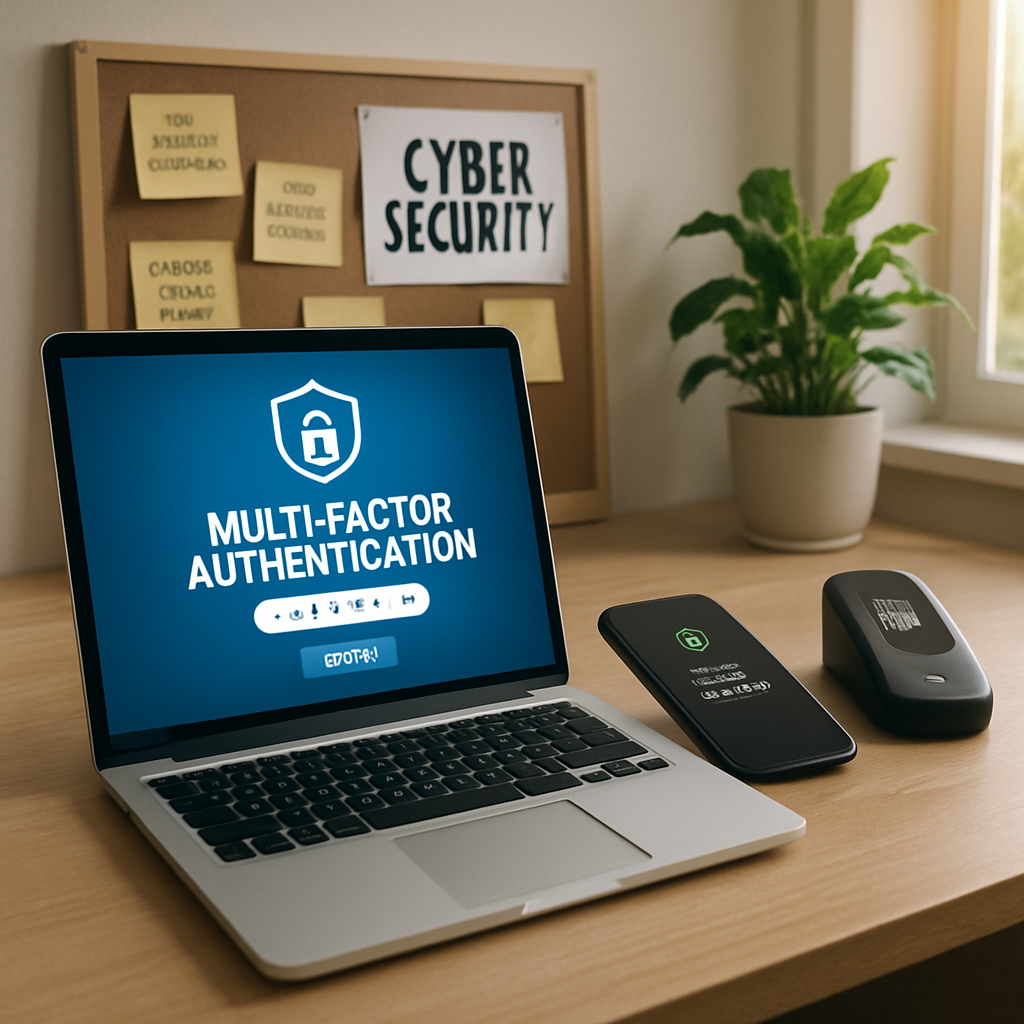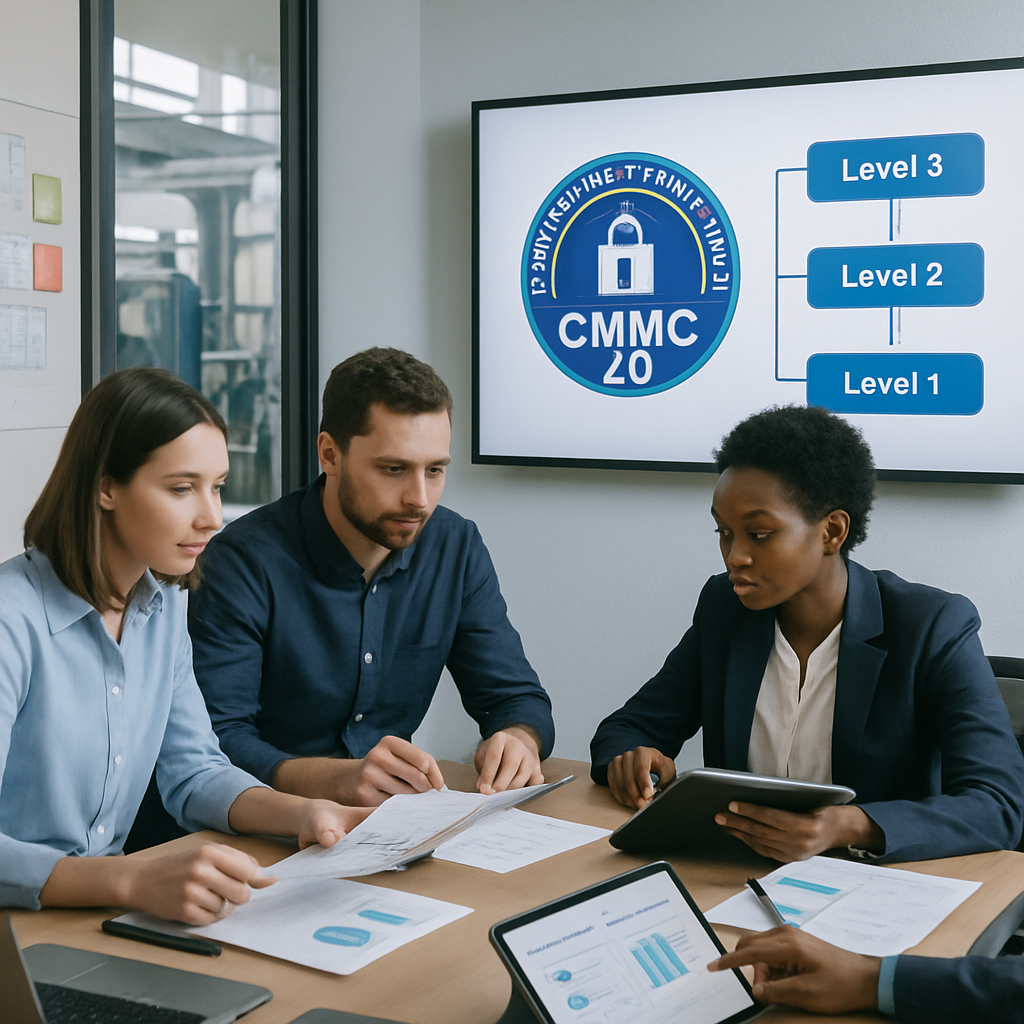AI Voice Cloning: A New Era of Phishing Attacks
AI-powered voice cloning is revolutionizing cybercriminal tactics, ushering in a new wave of compelling phishing attacks that threaten business...
3 min read
.jpeg) Michael Markulec
:
Oct 29, 2025 2:26:16 PM
Michael Markulec
:
Oct 29, 2025 2:26:16 PM

As ransomware attacks escalate, small businesses face mounting anxiety over cybersecurity vulnerabilities that could threaten their survival.
Ransomware attackers increasingly target small and midsized businesses (SMBs) due to their limited security resources and perceived vulnerability. Cybercriminals view SMBs as easier targets compared to large enterprises, often assuming these organizations lack dedicated security teams, robust incident response plans, or advanced threat detection capabilities.
In many cases, SMBs operate with understaffed IT departments or may even rely on third-party providers without dedicated security oversight. This absence of in-house expertise can delay threat detection and response, making it harder to contain attacks before significant damage occurs. Furthermore, SMBs often rely on outdated legacy systems and face significant budgetary constraints that limit investment in modern cybersecurity technologies and continuous monitoring tools. Such constraints usually lead to overlooked critical vulnerabilities—such as unpatched software, open remote desktop connections, or weak access controls—that attackers readily exploit as entry points.
Compounding the risk, SMBs typically handle sensitive customer information, payment data, and proprietary business intelligence. These valuable assets heighten their appeal to cybercriminals seeking financial gain and leverage in negotiations, especially when SMBs are integral parts of larger supply chains or support enterprise clients. Threat actors know that compromising an SMB can serve as a conduit for broader attacks, amplifying the impact and increasing the confidence that their ransom demands will be met. As a result, SMBs face persistent and escalating threats that demand vigilant, proactive security strategies.
The financial impact of a ransomware attack on a small business can be devastating, often extending far beyond the initial ransom demand. In many instances, organizations suffer from prolonged operational downtime, disrupting critical services and compromising productivity. Lost revenue rapidly accumulates as business activities stall, while the costs of remediation—including IT forensic investigations, system restoration, legal counsel, and communications with stakeholders—place substantial financial strain. If sensitive customer data is breached, organizations may also incur regulatory fines and mandatory notification costs, especially under data privacy laws such as GDPR, HIPAA, or state-specific breach notification laws.
The cumulative fallout can be severe enough to jeopardize a company’s ability to continue operations. Industry research frequently cites that up to 60% of SMBs shut down within six months following a significant cyber incident—a testament to the existential threat posed by ransomware.
Reputational damage further compounds these risks. News of a breach can erode customer confidence and lead to the loss of existing and prospective clients, undermining years of brand trust. For organizations in highly regulated sectors like healthcare or finance, the consequences intensify: failure to protect sensitive information can trigger contractual penalties, increased regulatory scrutiny, and civil litigation. The broader implications—ranging from business disruption to diminished market reputation—highlight why proactive, strategic cybersecurity investments are crucial for long-term resilience and regulatory compliance. Recognizing these risks underscores the necessity for SMBs to adopt a comprehensive security posture before an incident occurs.
To effectively counter ransomware threats, SMBs must employ a multi-layered security strategy that integrates modern technology solutions, comprehensive security policies, and ongoing workforce education. This begins with maintaining frequent, reliable data backups—stored securely in off-site locations or trusted cloud environments—to ensure rapid recovery and business continuity in the event of an attack. Strong identity and access management (IAM) controls are essential; this includes routinely updating user permissions, enforcing the principle of least privilege, and implementing strict password policies to limit unauthorized access. Timely patch management remains a cornerstone of prevention, as regularly updating software and firmware is vital for closing exploitable vulnerabilities that attackers often leverage.
Equally important is prioritizing employee training. Since phishing and social engineering remain common entry points for ransomware, continuous security awareness programs are critical. These programs empower staff to detect suspicious communications, report threats promptly, and maintain safe digital behaviors. Investing in advanced endpoint detection and response (EDR) solutions adds an extra layer of protection by enabling real-time monitoring, threat identification, and automated incident response. Activating multi-factor authentication (MFA) for all key systems further reduces the risk of compromised credentials, making it significantly harder for attackers to gain a foothold within the network.
For SMBs with limited internal security resources, partnering with managed security service providers can be a force multiplier—delivering access to specialized expertise, 24/7 monitoring, and rapid incident response. By combining these safeguards, organizations not only improve their ransomware defenses but also enhance overall cyber resilience, minimize potential business disruptions, and better protect customer trust and regulatory compliance.
Resilience in cybersecurity is not a one-time project but an ongoing organizational commitment that requires vigilance, adaptability, and executive support. For small and midsize businesses (SMBs), maintaining cyber resilience begins with a cycle of proactive risk assessments to pinpoint gaps in the security posture and systematically align cybersecurity investments with the most valuable assets and overarching business objectives. This routine evaluation ensures that limited resources are directed to the most pressing risks, allowing businesses to strengthen defenses where they matter most.
Partnering with cybersecurity experts—such as virtual Chief Information Security Officers (vCISOs) and managed security service providers—enables SMBs to access deep, up-to-date expertise and scalable, enterprise-grade solutions without the expense of a full-time, in-house security team. These relationships offer guidance on evolving threats, regulatory changes, and technology options, helping businesses implement best practices such as advanced threat detection, secure cloud adoption, and endpoint protection strategies.
Equally important, building a culture of security across all levels of the organization ensures that every employee understands their role in risk reduction. Regular training and transparent communication about policies and threats instill a sense of shared responsibility and foster a proactive mindset. By consistently prioritizing continuous improvement, embracing innovation, and integrating cybersecurity into day-to-day decisions, SMBs can transform security from a reactive cost center into a strategic business enabler—fortifying their brand reputation, safeguarding customer trust, and empowering sustainable growth.

AI-powered voice cloning is revolutionizing cybercriminal tactics, ushering in a new wave of compelling phishing attacks that threaten business...

Small businesses face growing cyber threats, making multi-factor authentication a critical defense to safeguard sensitive data and ensure business...

Discover how CMMC 2.0 is reshaping cybersecurity compliance for small manufacturers in the defense sector and what steps your business must take to...